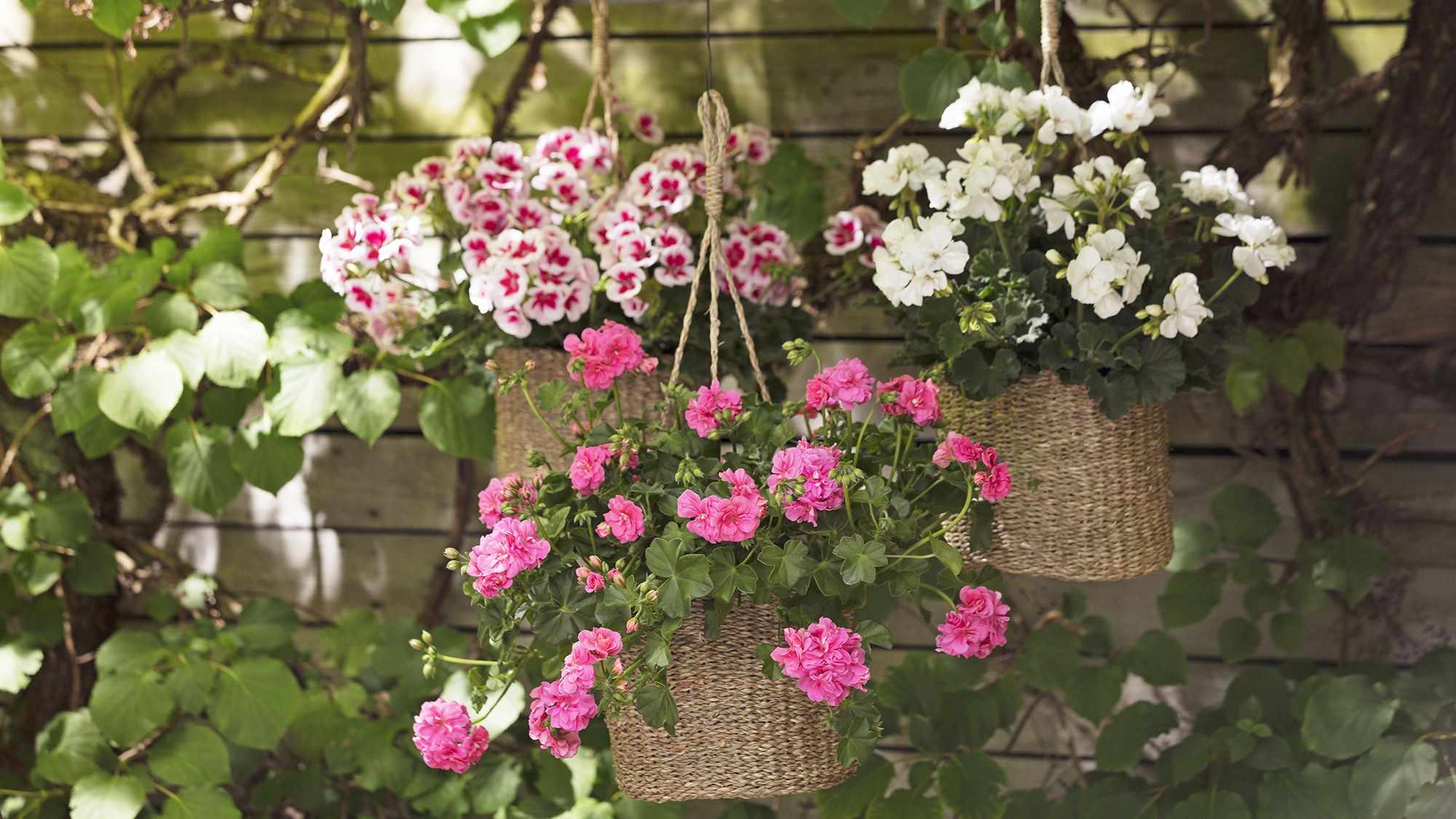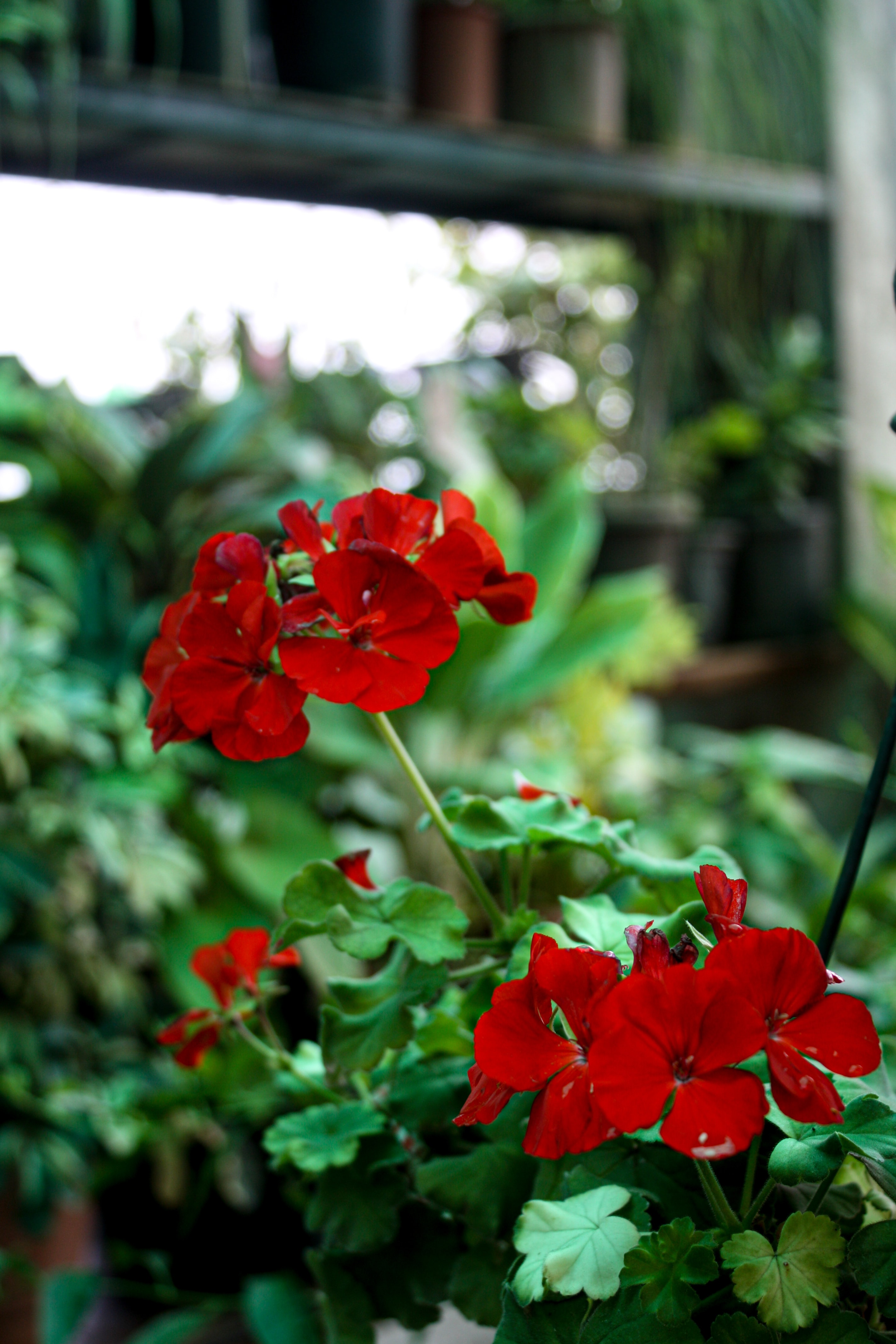How to deadhead geraniums – and why geranium leaves turn yellow
Deadheading geraniums is an easy way to keep those flowers coming – and you can take care of yellowing leaves at the same time


It's important to deadhead geraniums regularly; doing so will keep them blooming for longer. It's a simple job and you don't even need scissors to prune off any faded flowers, you can just snap them off with light pressure with your hands.
Below, we tell you how to deadhead geraniums in one easy step, and why leaves are yellowing, too, so that your plant stays looking healthy and happy until such time as you have to overwinter your geraniums, ready for next year.
How to deadhead geraniums

'To deadhead geraniums, simply follow the stem of the dead flower down to where it meets the main stem. Holding the main stem gently with one hand, push your finger gently down on the spent stem where it joins the main stem – you can see where the flower stem meets the main stem at the leaf nodes above. It should snap off easily,' says Rachel Crow, Homes & Gardens' Garden Editor.
'Make sure you take the stem of the flower head back as far as you can to stop the geranium wasting energy trying to fix the old flower but instead put the energy into producing new blooms.
'Once deadheaded, dispose of the spent blooms in the compost, unless they are diseased or have a pest problem.'
Where do you pinch off geraniums?
You pinch off geraniums where the stem of the spent flower meets the main stem of the plant. This is usually just above a leaf or leave node.
How do you keep geraniums blooming?
The best way to keep geraniums blooming is by pinching off or deadheading flowers as they die off. The geranium will then put its energy into growing new flowers, rather than into a dying flowerhead.
As a general rule, don't deadhead more than a third of the flowers at one time to keep your plant looking at least a little full while new blooms come in. It really is a job you can do weekly.
Why do geranium leaves turn yellow?
Geraniums are drought-tolerant plants, so leaves usually turn yellow because they are being overwatered. You may notice that the yellow leaves, the bottom part of the plant has more yellow leaves or yellow spots on green leaves.
Check the soil and question your watering routine. If the soil feels wet or waterlogged, allow it to dry out before watering it again.
However, if just the edges of the geranium's leaves have turned yellow, the plant might have been underwatered. In this case, check the soil again, pushing your finger a good couple of inches in. If it's bone dry, give the geranium a good watering.
Geranium leaves also turn yellow if the plant is too cold, so moving it to a warmer, sunnier spot should help.
Finally, yellowing leaves on a geranium might be caused by a nutrient deficiency, in which case applying a fertilizer will help, and as an added bonus, you'll get a bigger plant with more flowers.
How do you fix yellow leaves on geraniums?
You can't fix yellow leaves on geraniums; once they have turned yellow, the plant can't generally grow them green again.
'Your best option is to remedy the cause of the yellowing by altering your watering routine so that it is neither under or overwatered, by moving it to a sunny spot it will enjoy, and by fertilizing it if it is nutrient-deficient,' says Homes & Gardens' Editor in Chief and geranium enthusiast Lucy Searle.
'Then snip off the yellow leaves where they meet the stem line, safe in the knowledge that a happy plant will soon fill out again.'
How do you rejuvenate geraniums
To rejuvenate geraniums, usually after overwintering, pot them up in moist soil, ensuring the plant is two leaf nodes deep into the soil so that strong roots can form. Next, water well and put them in a warm, sunny spot.
Sign up to the Homes & Gardens newsletter
Design expertise in your inbox – from inspiring decorating ideas and beautiful celebrity homes to practical gardening advice and shopping round-ups.

Lucy Searle has written about interiors, property and gardens since 1990, working her way around the interiors departments of women's magazines before switching to interiors-only titles in the mid-nineties. She was Associate Editor on Ideal Home, and Launch Editor of 4Homes magazine, before moving into digital in 2007, launching Channel 4's flagship website, Channel4.com/4homes. In 2018, Lucy took on the role of Global Editor in Chief for Realhomes.com, taking the site from a small magazine add-on to a global success. She was asked to repeat that success at Homes & Gardens, where she has also taken on the editorship of the magazine.
-
 How to clean a patio – 6 different methods, and when you must use a chemical cleaning agent
How to clean a patio – 6 different methods, and when you must use a chemical cleaning agentFrom manual scrubbing, natural solutions or calling in the pros, industry experts reveal the benefits and considerations of each method
By Andy van Terheyden Published
-
 Kris Jenner's favorite air fryer, the Ninja Crispi, is the perfect small kitchen solution – it deserves a place on the most compact of countertops
Kris Jenner's favorite air fryer, the Ninja Crispi, is the perfect small kitchen solution – it deserves a place on the most compact of countertopsKris approves of this compact yet powerful air fryer, and so do our own kitchen appliance experts, praising it for its multifunctionality
By Hannah Ziegler Published